Mahón, Maó or “Mo” for locals, is located at one end of the island of Menorca. This small city, which was established next to the second largest natural port in the world, is overflowing with charm and history. If you want to know what to do in Mahón, be sure to consult this list with the must-see places and a few secrets that only the locals know.
But first we want to stress the importance of travelling with respect for the inhabitants, their culture and the environment, by not leaving litter or waste and respecting privacy when taking photos, to avoid disturbing the local and other tourists. Now is the time to discover Mahón.
1. The port of Mahón
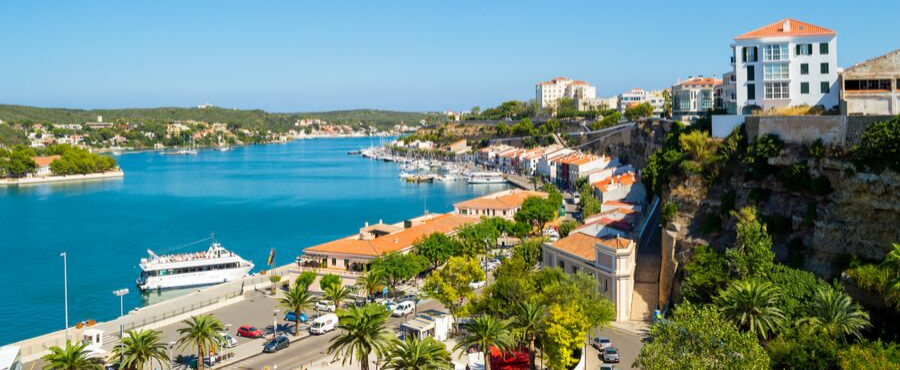
As we already mentioned, the port of Mahón is the second largest natural port in the Mediterranean, as it is comprised of an inlet with a length of more than 6 kilometres that allows ships to enter it safely. For this reason, historically speaking, it has been a key port on trade routes since it was first used in the 3rd century B.C.
In the middle of the port there are two islands, Isla del Rey and Isla de Llatzaret, which can both be visited by ferries that leave from the port itself. On them you will see some impressive constructions that date from the 18th century.
But the port of Mahón is much more than a historical site. It is also filled with bars, restaurants, boutiques and night life, and is the perfect place in which to take a stroll and have a meal, or see the commercial side of the island in a different way.
And if you want to see an amazing sunset, the views from the port are absolutely stunning. We certainly recommend it.
2. Mercat des Claustre
Fuente: www.illesbalears.travel
Menorcan food and crafts are just some of the island’s attractions. And one of the places you should visit in order to enjoy them is the Mercat des Claustre. The market is open every day of the week from Monday to Friday from 7 a.m. to 9 p.m., on Saturdays from 7 a.m. to 6 p.m. and on Sundays from 7 a.m. to 2 p.m.
It has more than 30 stalls that sell all kinds of products such as fruit, vegetables, meat, cheese, crafts and clothes, among others. It’s the perfect place to try and discover the most traditional things on the island, from Mahón cheese, to sandals with rope soles and wicker handbags.
Not only is this market a model in promoting local trade, it is also a relevant place in the world of art and culture of the island. Concerts are held in the middle of the courtyard, under the title Es Claustre, featuring pop, jazz, rock and flamenco performed by national and international artists. The top floor of the building also houses exhibitions and is used for staging all kinds of cultural events.
3. Plaza de España and the Fish Market
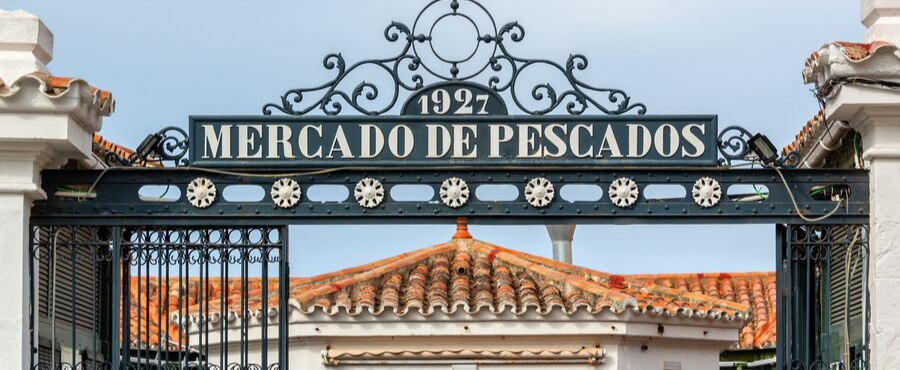
Other thing to do in Mahón is taking a walk to Plaza de España where the Fish Market is located (known by locals as the Mercat de Peix or Peixateria), just a few metres from the Mercat des Claustre. It is open from Tuesday to Saturday between 7:30 a.m. and 2 p.m. The gastronomic market has variable hours, occasional and subject to events.
It was built between 1926 and 1927 and was designed by the local architect Francesc Femenies. It is a rectangular building with porches around the perimeter and a hexagonal kiosk in the centre that is used for internal service purposes. The market is divided into two parts: the fish market with the traditional slabs where the freshest products are laid out; and the gastronomic market, where you can taste the market products.
Inside it are a few bars that serve food at midday. In the summer, it has a great atmosphere during the day and at night; and in the winter, it is a meeting point for locals who want to enjoy an aperitif at the weekend.
4. Gin Xoriguer Factory
Source: www.descobreixmenorca.com
Have you tried the famous Menorcan gin? Visit the factory that makes Gin Xoriguer, the island’s local gin and probably the oldest gin in the Mediterranean. Destilerías Xoriguer has a very interesting history in which fire, perseverance and the presence of the British Crown were the elements that gave life to this drink, whose recipe dates from 1700. The gin is still made using artisan processes and the distilleries where the factory was established are more than 250 years old.
Aside from its unique taste and aroma, the bottle is an element that sets it apart from others. The handle on the neck was used to transport it when it was sold in bulk. A detail that has remained to this day.
To find out all its secrets and taste one of the most emblematic drinks on the island on the gin scene, book your visit here.
5. Santa María Church and Town Hall Square
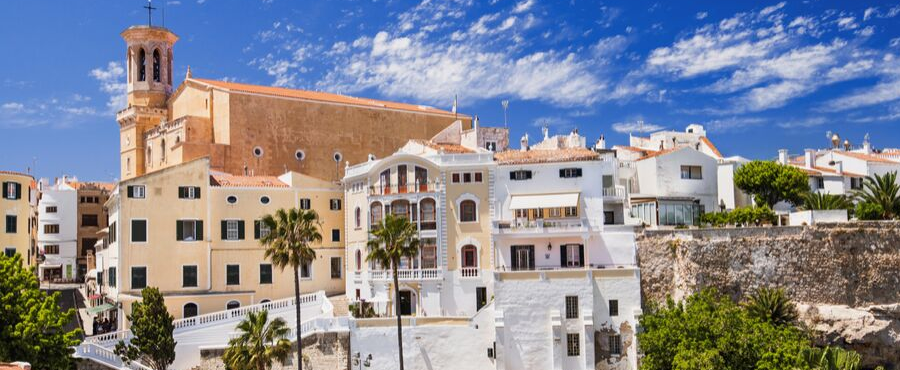
Still looking for what to see in Mahón? Try checking the Church of Santa María, one of the largest and most beautiful on the island. It is located in Plaza de la Constitución, next to the Town Hall, surrounded by bars and terraces from which you can admire it as you enjoy the most emblematic dishes of Menorca.
It was built in the 18th century on the former site of an ancient 13th-century Gothic church. Its interior is inspired by the neo-Gothic style and it has one of the best conserved ornate organs on the island. Having the opportunity to listen to music played on this fantastic instrument is a worthwhile experience.
6. Pont de Sant Roc
The Bridge or Grand Gate of St. Roch is all that remains of the ancient medieval wall of the city. It marks the route to the interior of the island in the direction of Sant Climent and Ciutadella.
It was built in the 14th century pursuant to the Royal Order of King Pere IV, of August 21st of 1359. During its existence, the Gate has been remodelled on many occasions due to attacks and conquests. One of the most important was the attack of the pirate Red Beard who ransacked the city of Mahón in 1535.
As for its name, it was formerly known as Portal de Dalt (the Upper Gate) as it was located on the other side of Portal de Baix (the Lower gate), in calle de Isabel II. It was also known as Portal d’en Servera, after the family who lived next to it. But since the 18th century, it has been called the Gate of St. Roch after the saint that is next to the gate.
7. Pigalle - Nautral bakery
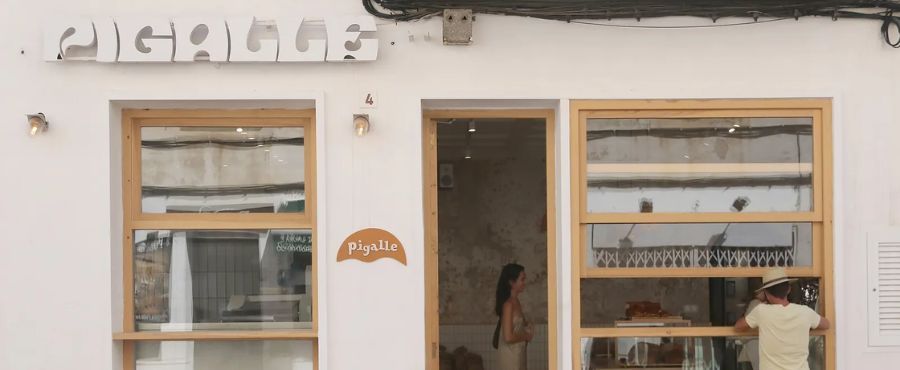
At Pigalle, excellence in bread making is more than just a tradition – it is an art fused with respect for nature and sustainability. Each loaf is the result of a meticulous artisanal process, using only natural, sustainable raw ingredients. The secret lies in using sourdough, an ancient method that gives these loaves a unique, authentic taste.
The key is in their organic wholemeal flours, carefully selected and stone-ground, preserving all their nutritional properties and giving them unequalled texture and taste. The result is an extraordinarily tasty, healthy, craft bread. You can also enjoy their speciality coffees, whose aroma invites you to savour them, along with their irresistible croissants and brioches.
8. Museum of Menorca
Another great idea of what to do in Mahón would be visiting Museum of Mahón, it's a must! This is the most important museum on the island. It has a very impressive exterior, as the museum is located in an ancient Franciscan convent dating from the 15th century. The interior will take you back to past eras on the island of Menorca.
Its halls allow you to take a look at the island’s history from prehistoric times to the present day, through more than 200,000 exhibits. The Museum of Menorca is the centre of reference for the diffusion of the heritage and culture of Menorca, and it has promoted an important research project with a specific focus on the prehistory of the island.
It is open from Tuesday to Saturday from 10 a.m. to 2 p.m. and from 6 p.m. to 8 p.m., and on Sundays and public holidays from 10 a.m. to 2 p.m.
9. Fortress of Queen Isabel II
Source: www.fortalesalamola.com
It is located on the peninsula known as La Mola, and was built between 1848 and 1875 to defend Menorca from the threat of the British. La Mola Fortress is one of the finest examples of 19th-century military architecture on the island.
La Mola Fortress was also known as the Fortress of Queen Isabel II, as she was the one who ordered it to be built. It played a crucial role in defending the island of Menorca from the attacks of the British army.
It is in an exceptional state of repair, as despite the threats of other armies, it was never attacked. Visiting hours vary, depending on the time of year.
10. Beaches and coves near Mahón
Source: www.menorca-playas.com
If you are in Menorca in the summer and you want to take a dip in the sea near Mahón, there are many amazing beaches and coves. From Mahón you can get to both the southern and the northern beaches and visit them depending on the direction of the wind.
The beaches in the north are less touristy, as they are usually unspoilt, and the turquoise waters of the beaches in the south will make you feel you are in paradise.
If you prefer coves, we recommend you visit Ses Olles, Cala Rafalet or Cala Mongofre. And if you like sunbathing, we recommend you spend a day at Binibèquer or Sa Mesquida.
11. Hauser & Wirth Menorca: Art, Education and Nature in Maó
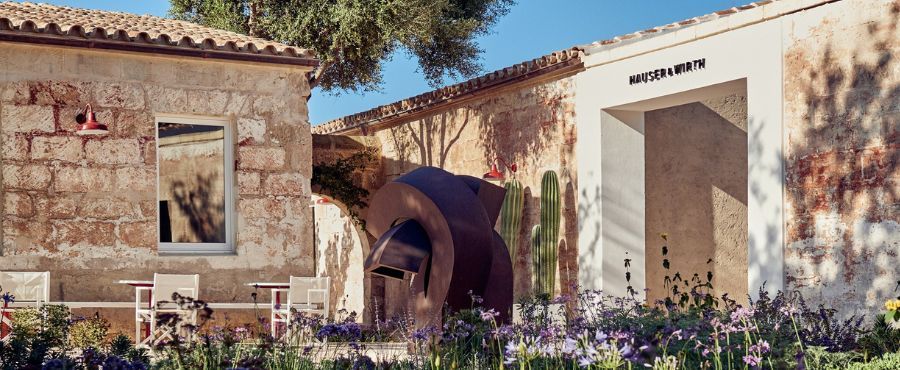
Discover contemporary art in a unique natural setting at Hauser & Wirth Menorca. Located on Isla del Rey, in Maó harbour, this art centre is housed in a former eighteenth-century naval hospital.
Boasting eight galleries and an outdoor sculpture court, Hauser & Wirth Menorca offers exciting exhibitions by artists such as Louise Bourgeois, Eduardo Chillida, Joan Miró and Franz West. Yet it offers more than exhibitions. There are also educational activities involving the local community and visitors, such as screenings, talks and workshops.
Part of the prestigious Hauser and Wirth gallery, this art centre is a must-see destination for art and nature lovers in Maó. Immerse yourself in a world of creativity and connection with the environment at Hauser & Wirth Menorca.
12. Llatzaret Fortress: Health Protection in Maó
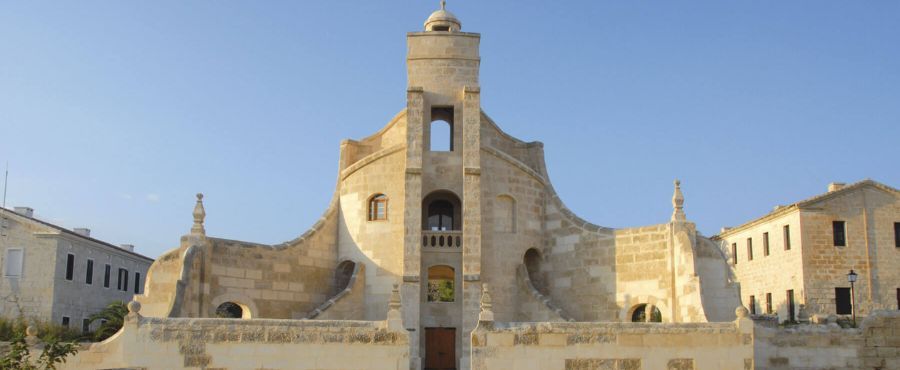
Discover the historical Llatzaret Fortress, a sanitary fortress that served as a gateway for ships coming from Africa in the nineteenth century. Built between 1793 and 1807, this fortress operated as a compulsory quarantine centre for ships suspected of carrying infectious diseases.
Located at the entrance to Maó harbour beside Fort Felipet, the Llatzaret Fortress has impressive walls that are 1,240 metres long, 380 metres wide, 1.30 metres thick and 7.45 metres high. Ships’ crews had to spend 40 days in quarantine here to ensure they were not carrying infection and for the sick to recover. Learn about this important historical testimony that reveals the health measures implemented in the past and their impact on protecting public health.
Now you have ideas for what to see in Mahón in a day or if you are visiting Menorca for longer.
13. Ca’n Senyalet
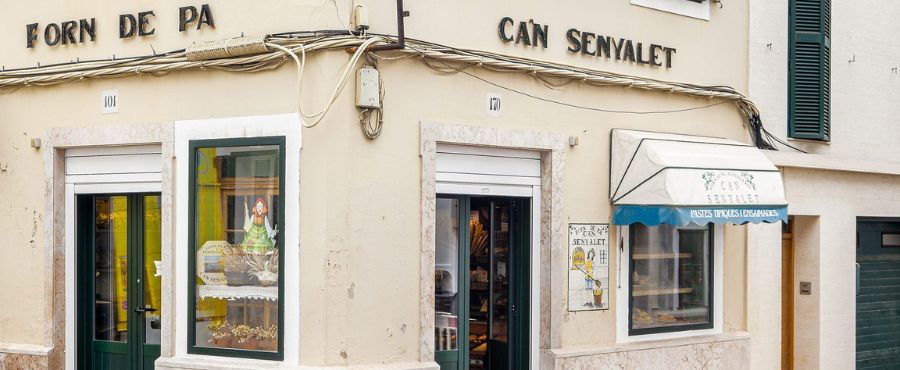
Founded in 1935 and located at 170, S’Arraval Street, this is one of Maó’s oldest, most emblematic bakeries. Its long tradition in hand-baking Menorcan pastries and cakes, such as its delicious ensaimadas and formatjades, has been the secret of its success and continuity over generations.
A charming feature of the place is that it retains some old machines, including one that is still in operation. Over the years, it has undergone changes as it has needed to modernise and restore the business. However, it has remained true to its traditional, authentic essence, reflected even in its exterior signage, featuring the original raised metal lettering. Ca’n Senyalet is likewise recognised for belonging to the brand “Pa d'aquí, forn i tradició” (“Bread from here, bakery and tradition”, which distinguishes bakeries that make various types of bread typical of the Balearic Islands. The quality of its products and its attachment to tradition make this place an essential stop for lovers of authentic Menorcan bread and pastries.
14. Pont d’es Castell Lookout
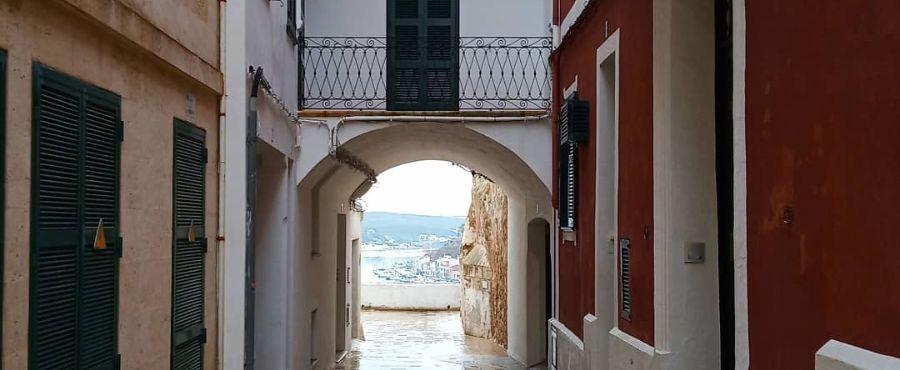
Discover Maó’s historical and picturesque essence from its charming Pont d’es Castell. With spectacular views of Port Maó and the Ses Voltes coast, this lookout is sited in the city’s oldest section, once within the early Maó Castle. You access the lookout from the end of Alfons III Street, via a small passageway in Plaça de la Conquista. Here, you can immortalise your memories in stunning photos taken against the harbour’s majestic backdrop. You can furthermore contemplate the Es Claustre façade, Roquina Park’s lush gardens and the charming Pla de Baixamar. The square’s environs offer a gorgeous atmosphere, with several cafés that invite you to take a break while admiring the view. Make sure you visit the Maó Municipal Library, a building of huge cultural significance, and have a gander at the rear of the impressive Santa María Church. If you are seeking an authentic spot in Maó, brimming with history and beauty, Pont d'es Castell is simply must-see.
15. The Mô Mermaid
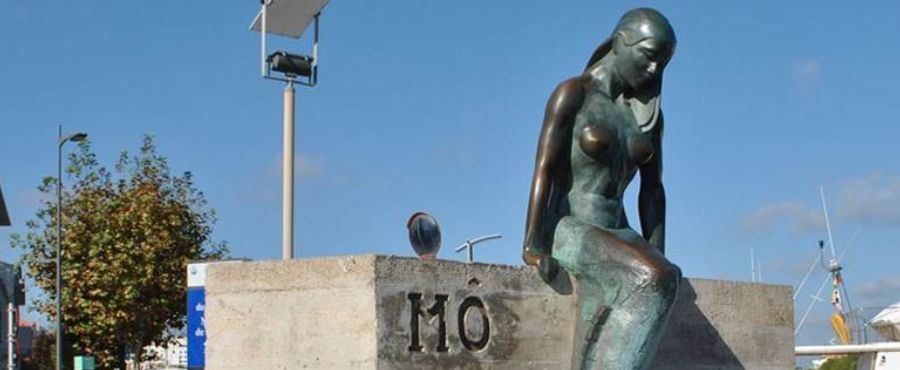
Discover one of Maó’s pre-eminent symbols, the mermaid Mô, a captivating work by renowned sculptor Leonardo Lucarini. Located in the harbour, this bronze sculpture depicts a mysterious woman with a fish tail, who seems to gaze at the horizon in enchanting melancholy. The legend surrounding her is as enthralling as her figure, for it is said that she guards the port jealously like a treasure, awaiting her lost love’s return.
The story goes that Mô is linked to a romance between the son of a Carthaginian general and a beautiful mermaid who rescued him after he was shipwrecked on a remote island.
Tragically, the young warrior lost his life in battle, and since then, Mô sits on the seashore, eternally awaiting his return. Her sad, expectant gaze is a constant reminder of the power of love and hope that endures timelessly.
Little mermaid Mô has become the emblem of Maó. Her name, pronounced in a peculiar way by the locals, transcends phonetic rules, taking root deep in the tradition and hearts of the people of Maó. Take the chance to get up close to this enigmatic sculpture and let her recount her story of romance and mystery.
16. Where to Eat in Mahón: Cala Bella
After exploring the streets and hidden corners of Mahón, there’s nothing better than letting yourself be guided by the island’s flavours at Cala Bella. This typical Menorcan house, located in the heart of the historic centre, is a small haven where freshness reigns: market cuisine, seasonal produce, and dishes that taste of the authentic Mediterranean. Its intimate and cosy atmosphere invites you to savour each bite slowly, as if enjoying dinner at a friend’s home. Open Monday to Saturday from 6:45 pm (closed on Sundays). The perfect spot to end your day in Mahón on a delicious note.

17. Where to sleep in Mahón?
Our hotels in Mahón allow you to stay in two very special sites: one in the natural port, where you can see the ships from the window of your room, and another in the city centre, with spectacular views from the rooftop.
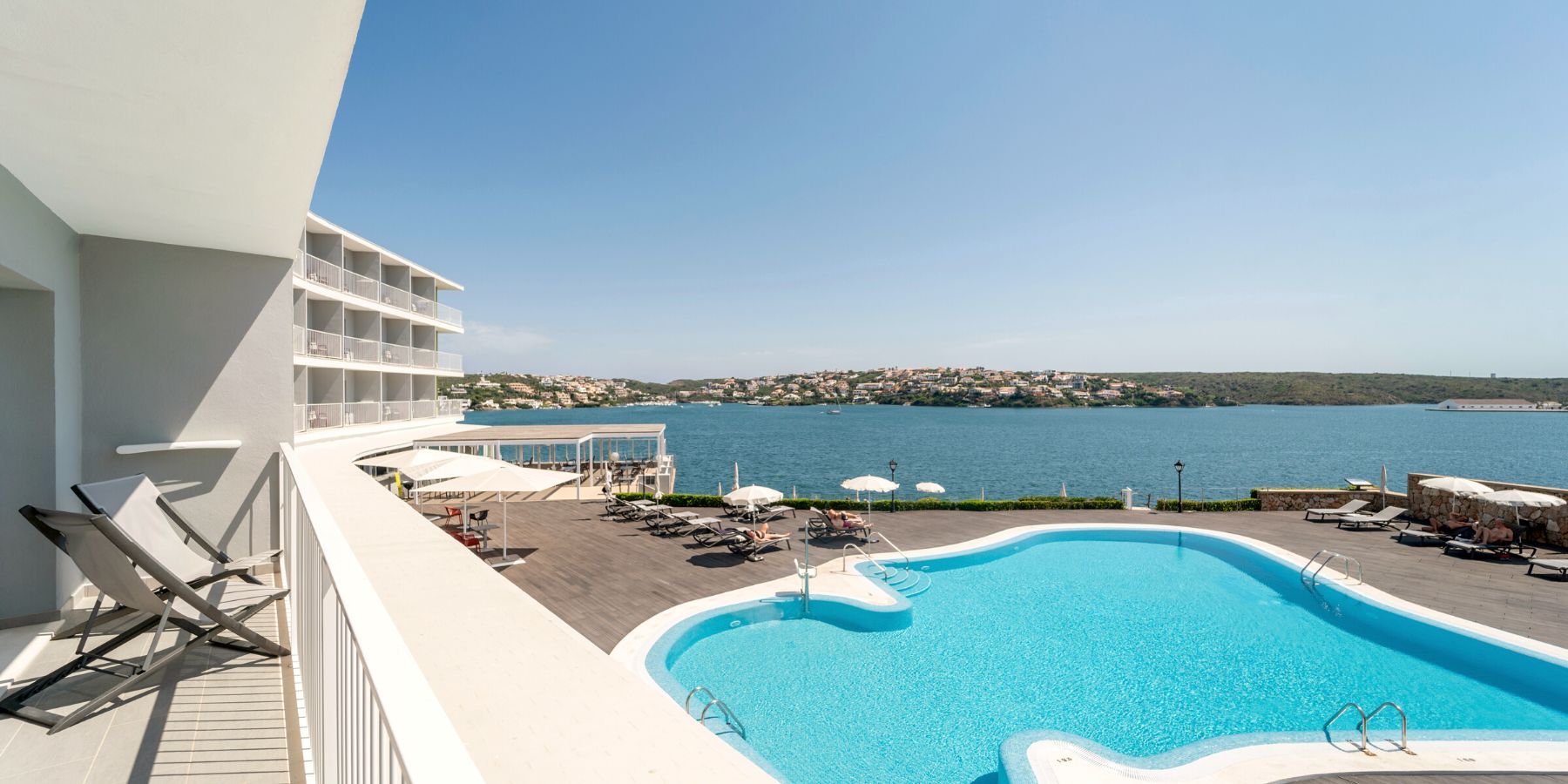
ARTIEM Carlos is located in the port of Mahón. It is the perfect hotel for relaxing and watching the ships go by, enjoying the local cuisine and breaking with routine in the outdoor spa.
ARTIEM Capri is the hotel for you if you prefer to stay in the city centre, as it is quite close to all that is going on and in a more urban setting. The Capri also has fantastic views from the rooftop and offers you the option of doing sport or taking a bath in the hot tub.
We also have apartments in the centre of Mahón, next to our ARTIEM Capri hotel.
If you are looking for a hotel in Mahón, choose either the Carlos or the Capri, depending on what your preferences are. We’ll be delighted to welcome you and recommend unique places to visit to make your stay memorable.